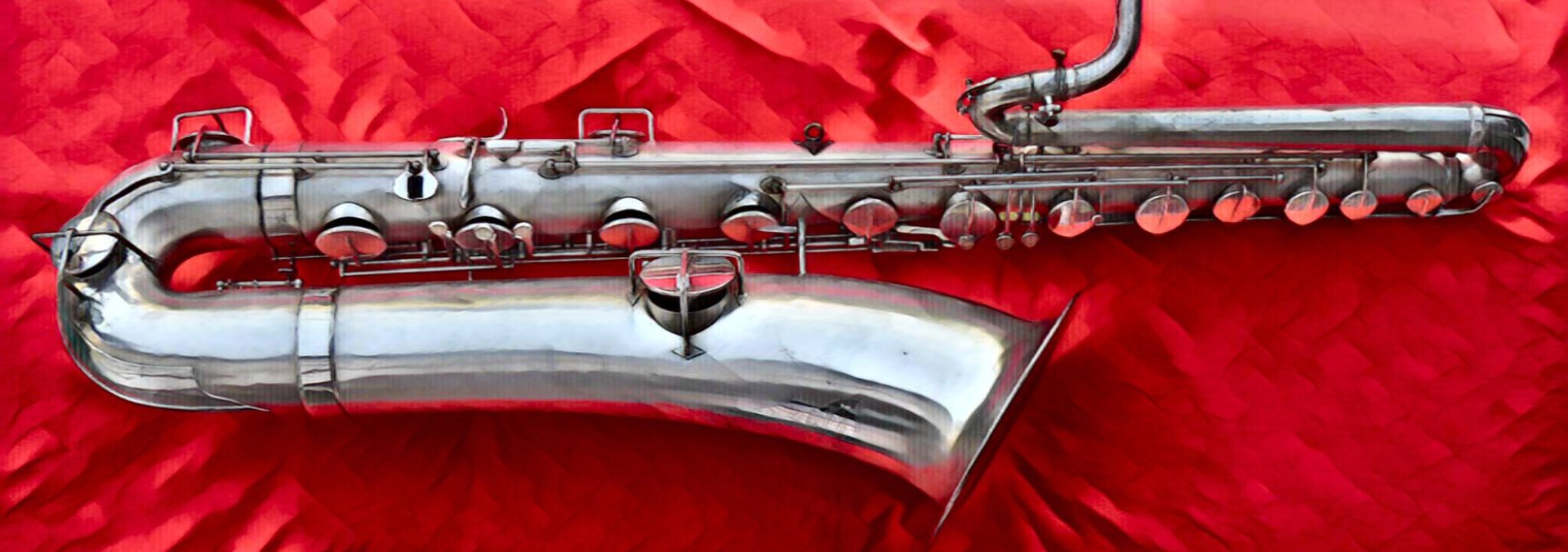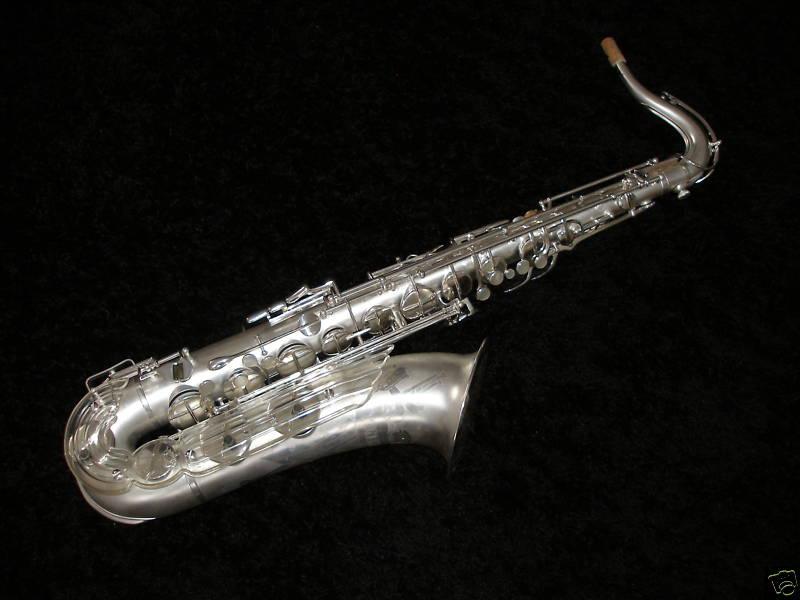The year was 1951, and the Julius Keilwerth Saxophone company filed an application with the German patent office for a radical new type of key guard. This key guard was made out of “Plexiglas oder anderen Kunststoffen” (Plexiglas or other plastics).
This plastic key guard, or angel wing as it would come to be known, was to provide a one-piece replacement for the multiple wire or sheet metal guards that protected the low Bb, B, and C keys. The angel wing further added protection to the low C# key—a key that had no protection before.
This is one of the diagrams from Keilwerth’s original patent application:
Although the patent was granted in August 1952, we know that the Plexiglas key guards were not without their problems. While these guards certainly looked striking…
Source: saxophon-spezialist on eBay.com
…they were prone to cracking and breaking. This is of course why the Julius Keilwerth company used the metal replacement wings to repair the horns under warranty. These same metal guards are of course still used today, to restore vintage Toneking and The New King model horns.
If you’d like to take a look at the original Julius Keilwerth patent for these angel wing key guards, you can find it on the European Patent Office website. Be warned however, the original document is only available in German, and some of the pages are quite blurry.
Given today’s technologies, it is very easy to come up with plastic compounds that will not break. I wonder why no saxophone manufacturer has picked up on Keilwerth’s design, and done something innovative. All we see is the same old, same old. The Vibratosax notwithstanding of course. 😉





@Thomas F: I agree with you, I haven’t seen a Hammerschmidt guard “crackle” either. It must have something to do with the plastic they used.
On Keilwerth’s patent application it stated Plexiglas or other plastic materials. Obviously the opted for Lucite. I wonder why? The Plexiglas replacement wing that the former owner made for my Toneking tenor is so thick and strong, it would never have broken. It’s scratched, but strong as the day it was put on. I’m curious if perhaps the Plexiglass didn’t allow for the proper shape? I’m speculating wildly here, but what other reason could there be?
@Mal-2: Yes, now that you mention it, the Yamaha horns did have that one piece guard on some models. As too do the new, cheap, no-longer-associated-with-Selmer, Bundy saxes, sold by WWBW.
Pretty simple — when subjected to a hard knock, metal bends or dents, or possibly gets scratched or scraped. Ugly, but either not detrimental to function or fixable. Plastic may also scratch or scrape (which is OK) but it’s far more likely than metal to crack or break. Also, most plastics (even now) are rendered brittle by UV, and metals are unaffected. This is one reason why I wouldn’t recommend a Vibratosax as a marching horn even if they had an action that was comparable to a metal sax.
As for the design itself, it’s clearly a good one. It’s good enough that Yamaha cribbed it for the 21, 23, and (I believe) 32. Why they only did it on the low-end horns is a bit of a mystery to me though.
Keilwerth’s angel-wing keyguards are cool. But I think the patent was more a way of “protection of the design” or “trademark protection” (mönsterskydd in Swedish!).
Klingsors acrylic keyguards are better than Keilwerths. Not a one-piece keyguard but they don’t #crackle”. At least not the ones I’ve seen. They broke instead!
I had found a link to a shop that was selling reproductions of the clear plastic guard. Now I’m having a hard time finding it. Can someone help?
Thank you!